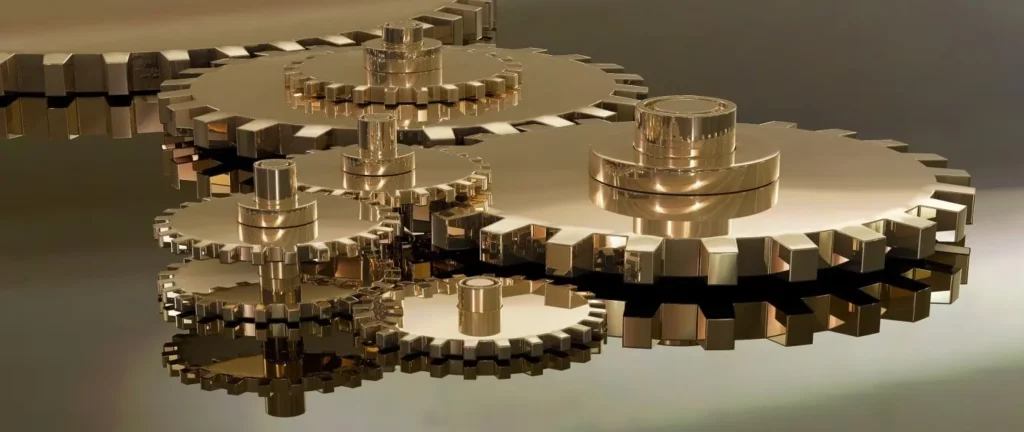Die casting
Die casting is a manufacturing procedure in which metallic products are produced. When melted metal is injected into mold cavities at high pressure, it is converted into different geometrical shaped metallic components. This process is known as die casting.
This is the best suitable and favorable method for the rapid production of metallic parts in bulk quantities requiring minimum post-production of machinery.
Some salient advantages of die casting are as follows:
1、High Quality: die casting process increases the life of the products.
2、High Reliability: It minimizes the need for modifying the components.
3、Quick Production: It takes less time for the manufacturing process.
4、Variety in Designs: It produces diversified products of different geometry and sizes.
5、Ease of Assembling: Assembly features such as studs, drill holes, and bosses can be integrated into mold cavities.
What is Die Casting Service in First Part?
The first Part is a Chinese private company that provides the best die casting services to manufacture different metallic products. It does have a branded value all around the world. A large number of skilled and well-experienced engineers are working in this company.
They work to produce complex, versatile metallic products of different machines. They work with every zeal and zest to manufacture complicated products with intricate patterns without compromising quality. They manufacture metallic components of almost all machines in the world.
What are The Types of Die Casting?
Die casting is a process whose primary purpose is to cast a mold using injected metals in molten form. Depending upon the part geometry, part magnitude, and part dimensions, there are two main types of die casting.
(1) Hot-Chamber die casting (Hot Casting)
(2) Cold-Chamber die Casting (Cold Casting)
Hot-Chamber Die Casting:
Hot-chamber die casting is also known as gooseneck casting or Hot-Casting. It is a more popular method than Cold- Chamber die casting. In this procedure, the cylinder chamber of the introducing mechanism is thoroughly submerged into the melted metal bath, gooseneck metal feed system draws the molten metal into the die cavity.
The cylinder chamber’s direct contact with the gooseneck metal feed system permits rapid and easy mold introduction. Consequently, then products become vulnerable to corrosion. This method is suitable for metals with lower melting points and high fluidity.
The best suitable metals to be used in this procedure are lead, magnesium, zinc, and copper.
Cold-Chamber Die Casting:
It is a similar procedure for Hot-Casting. The main object of this method is to focus on minimizing corrosion rather than the efficient production of the products. In this method, melted metal is introduced spontaneously or hand-allocated into the injection system.
It decreases the necessity for the injection system to be submerged in the molten metal bath. It is an excellent alternative method for the manufacture of metallic parts to Hot-chamber die casting because it saves the corrosion of immersion designs.
This is the best-suited method to cast metals with high temperatures such as Aluminium and its alloys.
The low-Pressure Die Casting Process:
This is the best suitable method to manufacture aluminum components that are symmetrical around their rotational axis. For instance, Vehicles’ rim is manufactured through low-pressure die casting.
In this process, the mold cavity is located just above the melted metal chamber and linked through a riser tube. When the chamber is pressurized (often 20-100kPa), the molten metal is drawn upward and into the die cavity. The removal of feeders from this method for manufacturing aluminum components gives a high and exceptional yielding rate.

The Vacuum Die Casting Process:
Vacuum pressure casting (VPC) is a relatively modern method that provides increased strength and minimum porosity. It is a similar procedure to the Low-pressure die casting, but the die-cast mold and molten metal path’s localities are altered.
In this method, the cylinder chamber can become a vacuum that exerts a force on the melted metal in the die cavity. It lessens the disorders and confines the quantity of gas interference. This method is the best suited for post-casting heat production treatment.
The Squeeze Die Casting Process:
This procedure is a useful solution for casting metallic substances and blended metals with low fluidity. In this process, the molten metal is poured into an open mold cavity, which then squeezes to be closed, exerting force on the melted metals to fill into the recessed portions of the molding cavity.
It provides immensely heavy products and is a supportive step for further heat-treating. It is connected with melted aluminum and is utilized in the application for fiber reinforcement.
The Semi-Solid Die Casting Process:
This process is also known as Thixoforming. It is the process that gives the least porosity and maximum density. In this method, a machine slices the workpiece into smaller components, and then they are heated. When metal arrives at the transition stage between solid and liquid, it becomes a slushy matter. A short sleeve exerts a force on it to push it into the die cavity, where it becomes rigid and hard.
It is beneficial for improved accuracy. Nonferrous metals such as magnesium alloys and aluminum alloys are often utilized in the semi-solid casting process.
Applications of Die Casting Process:
Die casting has vast applications in industries. It is mostly used for the parts manufacturing process that produces metallic components in bulk quantities. It is applicable in automobiles, aerospace, and power tools industries, etc










